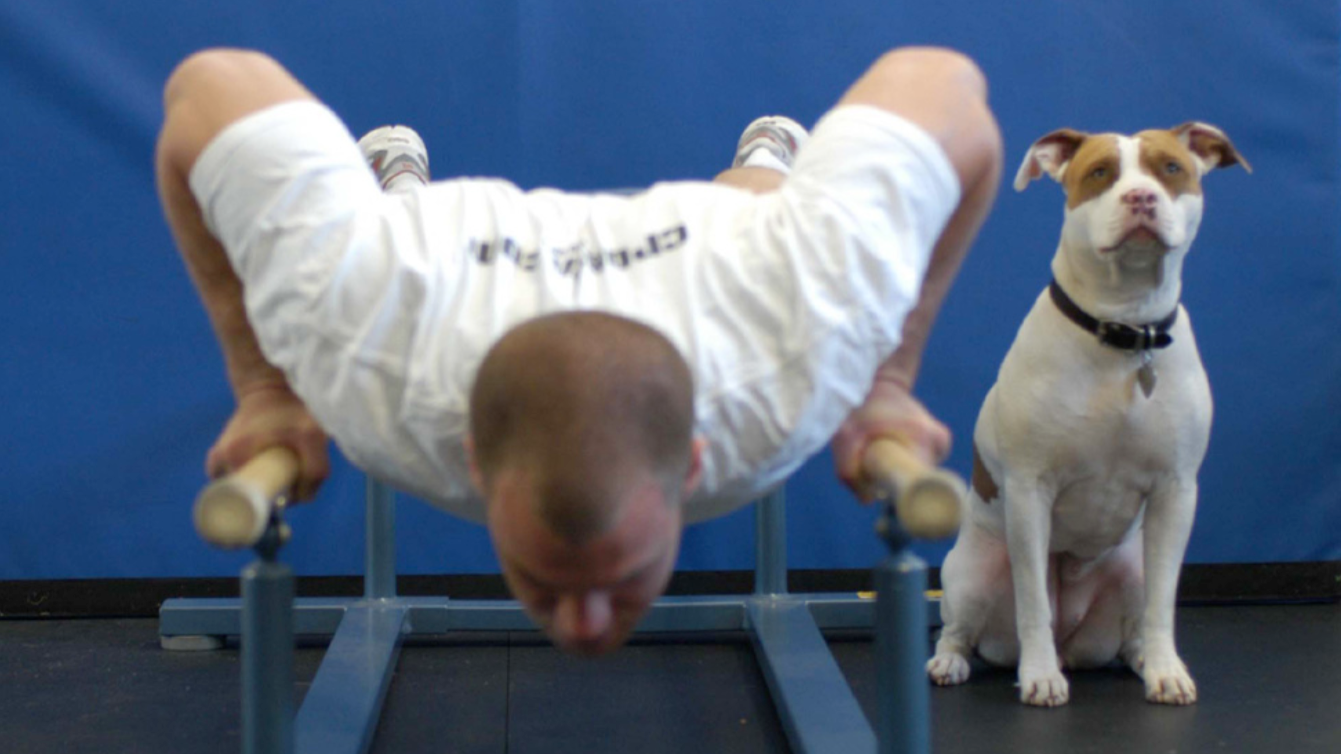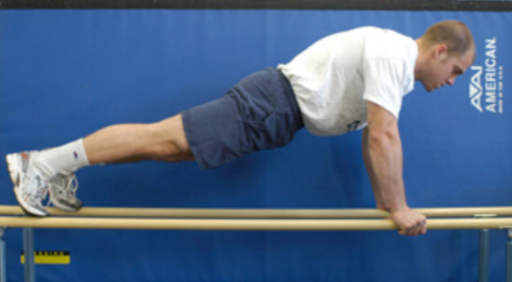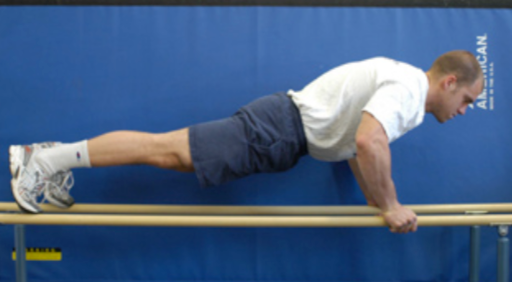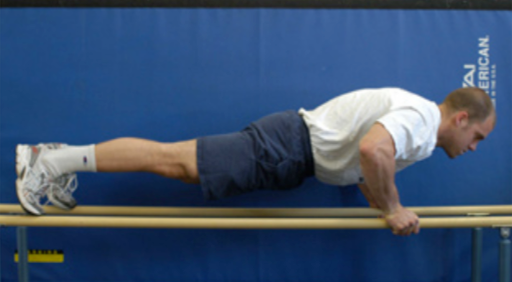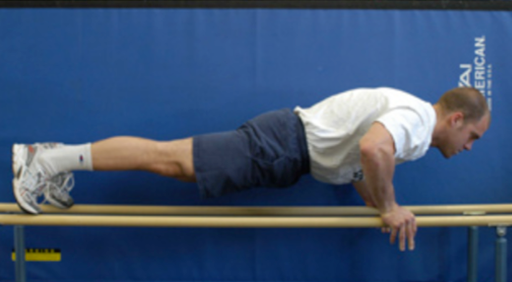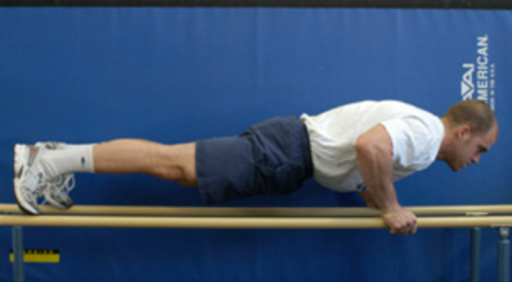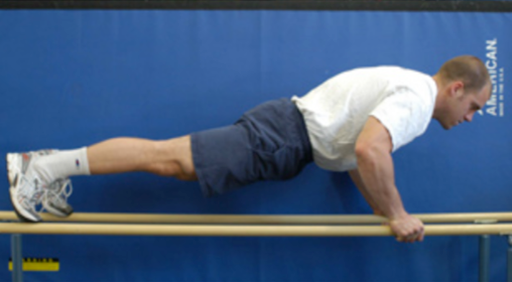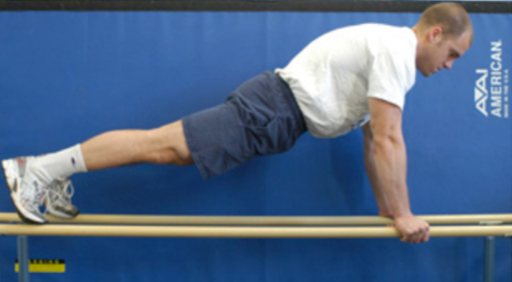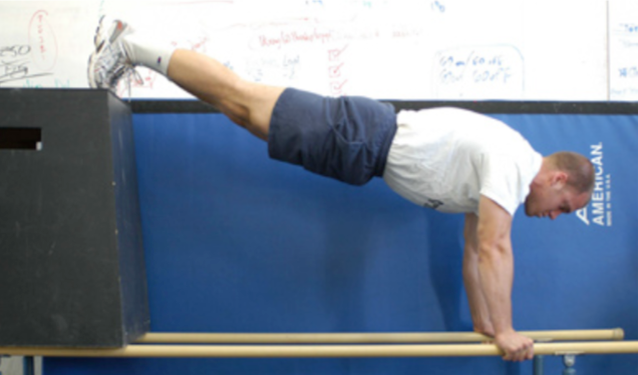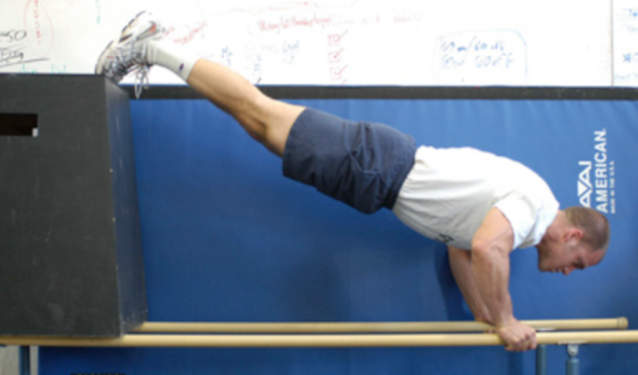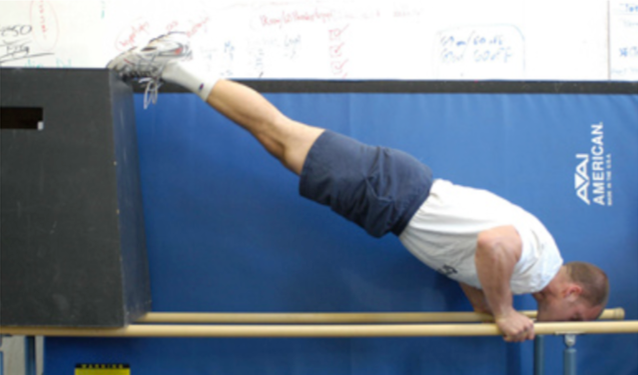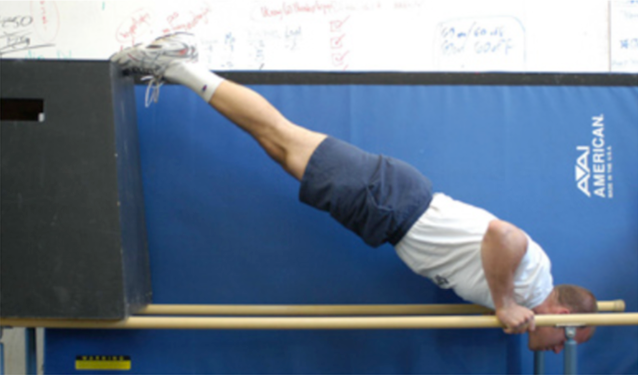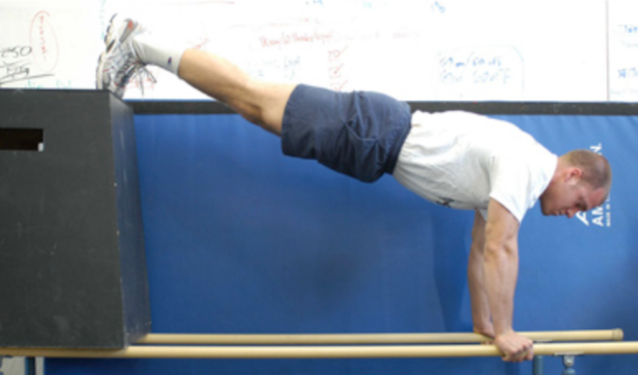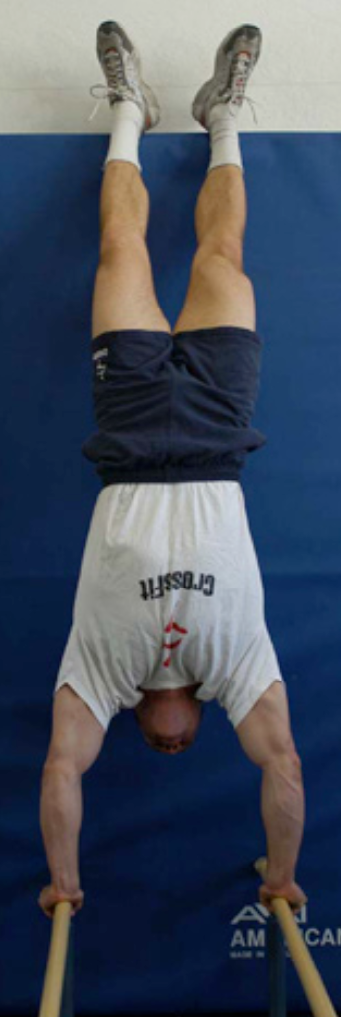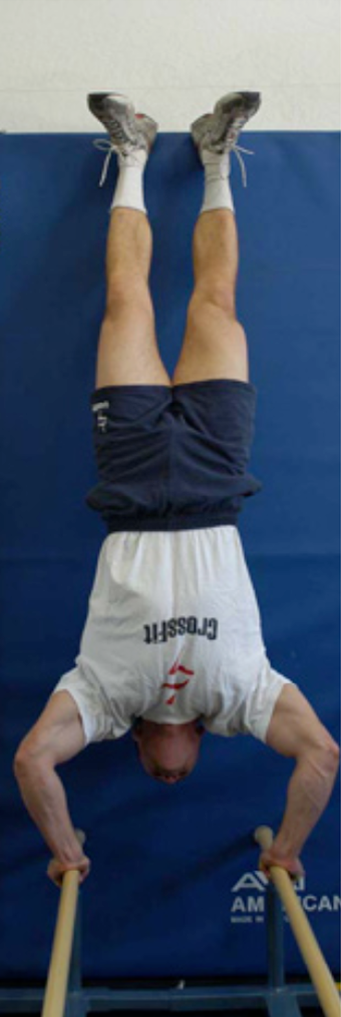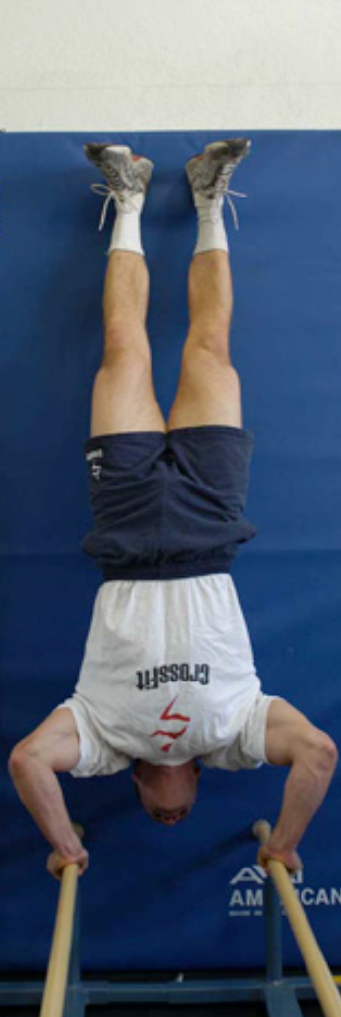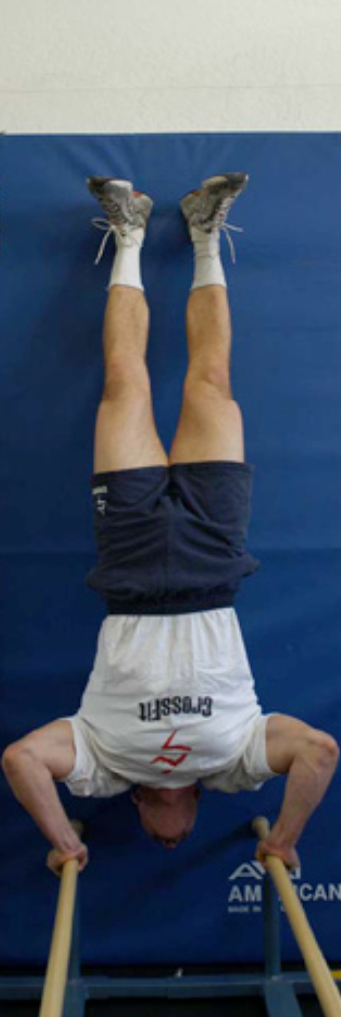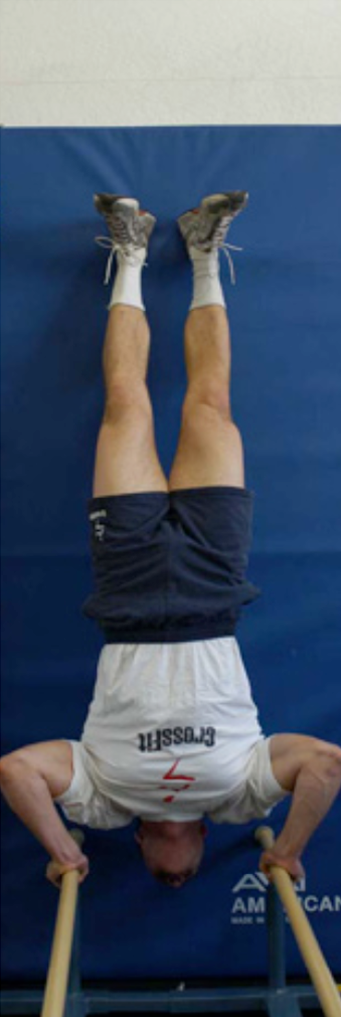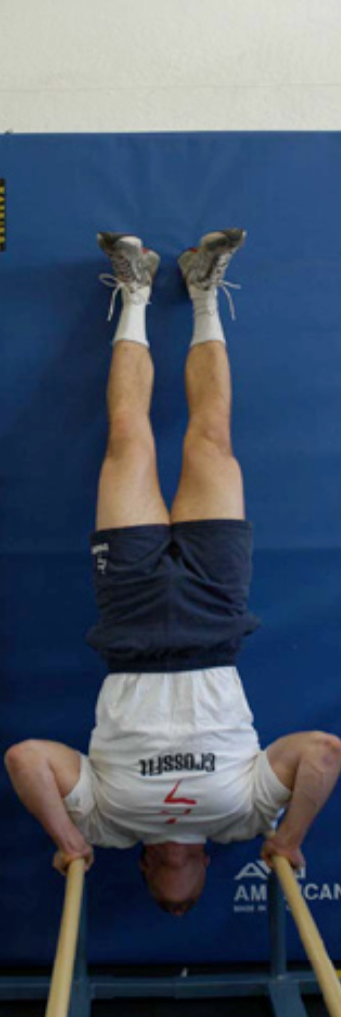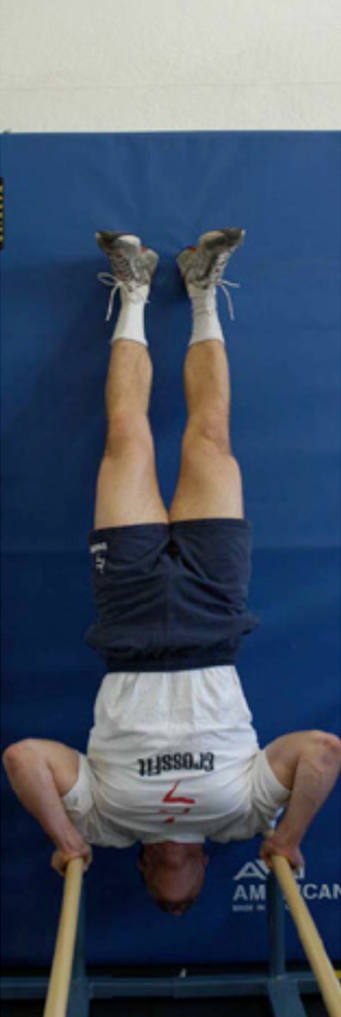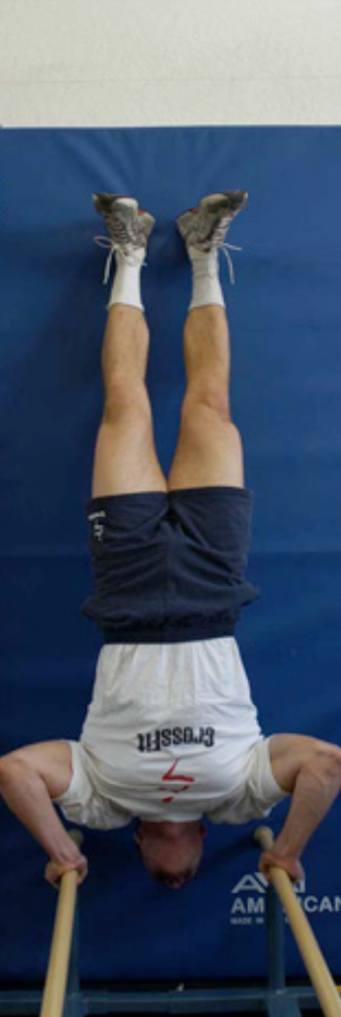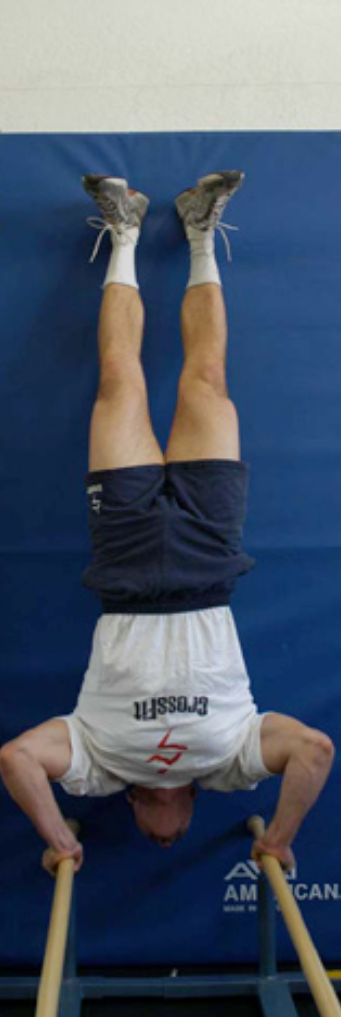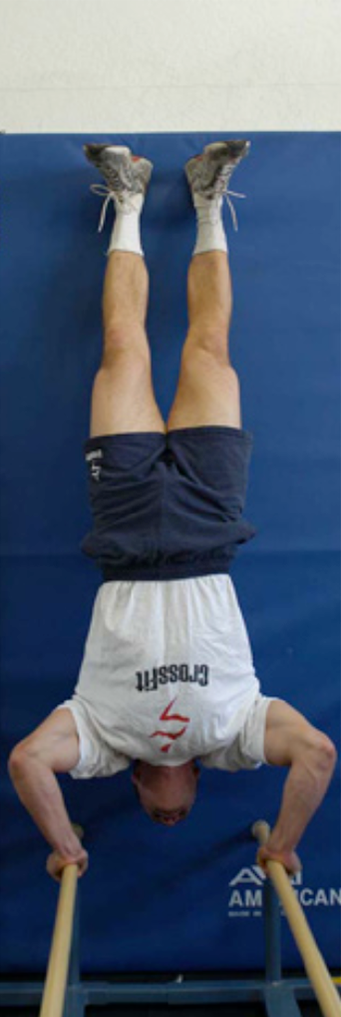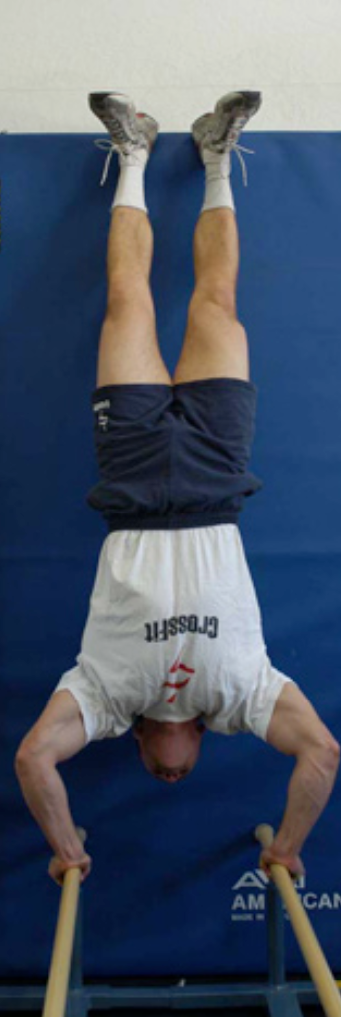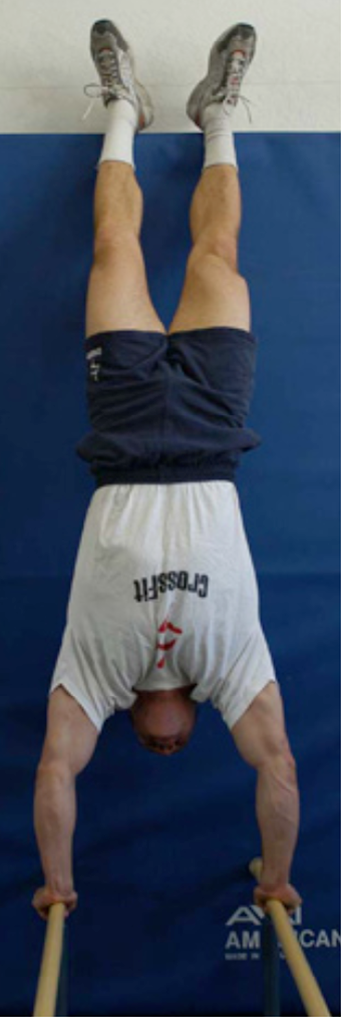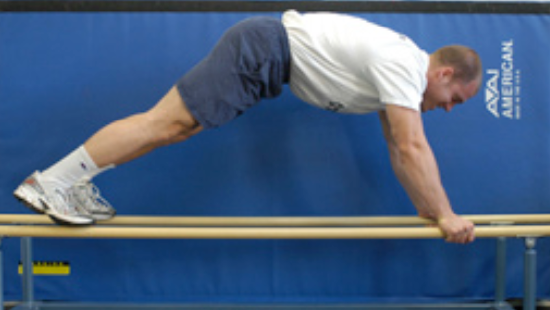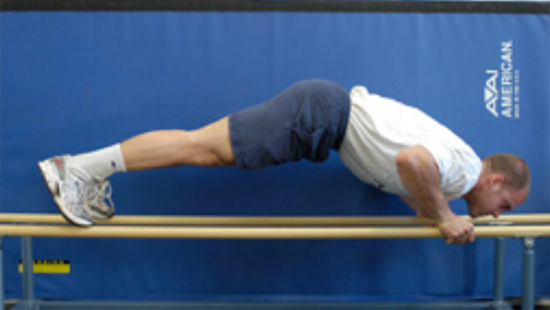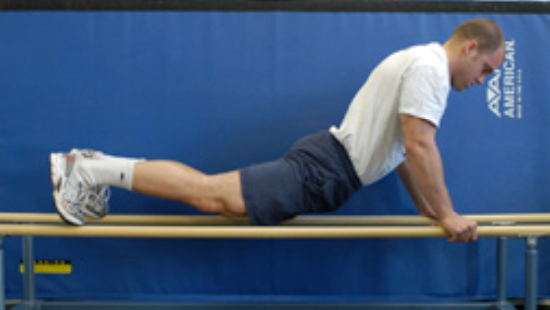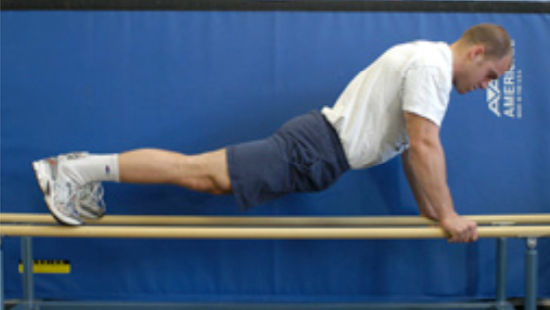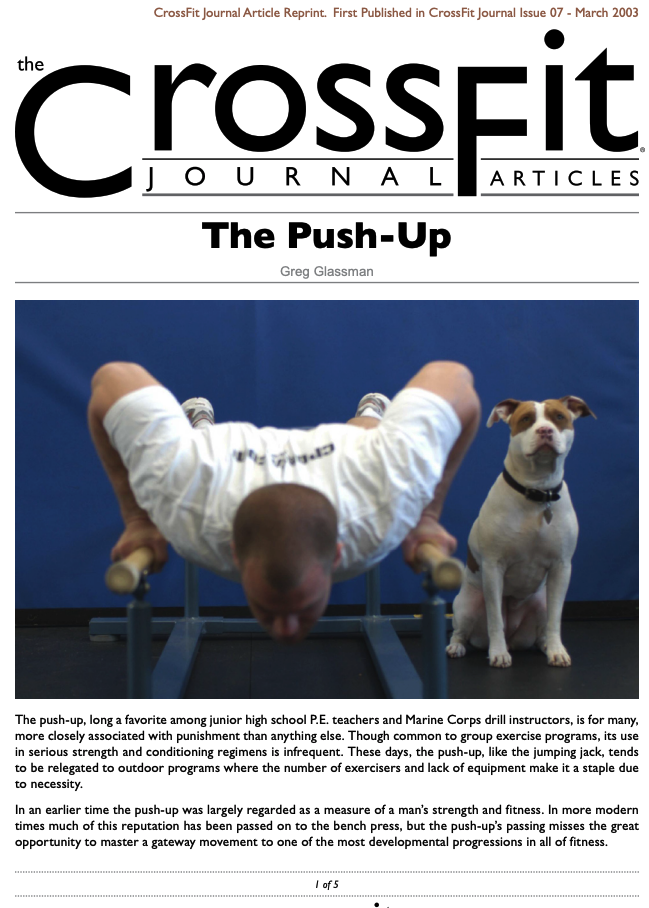The push-up, long a favorite among junior high school P.E. teachers and Marine Corps drill instructors, is for many more closely associated with punishment than anything else. Though common to group exercise programs, its use in serious strength and conditioning regimens is infrequent. These days, the push-up, like the jumping jack, tends to be relegated to outdoor programs where the number of exercisers and lack of equipment make it a staple due to necessity.
In an earlier time the push-up was largely regarded as a measure of a man’s strength and fitness. In more modern times much of this reputation has been passed on to the bench press, but the push-up’s passing misses the great opportunity to master a gateway movement to one of the most developmental progressions in all of fitness.
The push-up is more a family of movements than a single exercise. In fact, it is a progression that starts from the horizontal, which is the classic “P.E. push-up” and then, through gradually, incrementally, elevating the feet from the floor to a point where the athlete is eventually in a handstand, becomes the handstand push-up.
The handstand push-up, at the far end of the progression, is a challenging exercise that, when freed from the wall, becomes an extraordinary feat of strength and balance that has no peer in weightlifting movements. At the moment of performing 20 handstand push-ups without benefit of the wall, the athlete has achieved a level of strength and balance that not one in 100,000 gym goers will ever realize. The integration of strength and balance gives the handstand push-up, even though limited to bodyweight, an athletic edge that brings this movement to at least peer status with even the heaviest of presses—whether bench, overhead or jerk. Twenty handstand push-ups in the middle of the room or on parallel bars, again without the wall, confers, automatically, a single-rep military press of perhaps 150 percent bodyweight, whereas a 150 percent bodyweight single-rep military press suggests little or nothing about an athlete’s balance.
The possibilities and potentials don’t end at 20, 30 or even 50 handstand push-ups. Consider for just a moment the hand, finger and grip strength developed through performing these handstand push-ups on fingertips—at first all five fingers, then four and eventually three. Then there are the presses to the handstand that will come smoothly, easily and confidently as a bonus to the handstand push-up, but we’re getting years ahead of ourselves here.
Mastery of the basic, entry-level “P.E. push-up” is a prerequisite to the handstand push-up. Very few people have achieved mastery of the push-up, though many of you think you have. The test is simple: can you do 100 perfect push-ups? The standard for perfection, though simple, disqualifies nearly everyone. A perfect push-up is slow and deep with a body absolutely perfectly straight and taut. We’ve listed the most common push-up faults below. Not one in 50 guys with a 300-pound bench press can do 50 honest push-ups!
An Honest Push-up
So, “what is an honest push-up?” An honest push-up moves slowly from full extension to a point of maximum depth without “reaching” for the ground or perturbing the body’s taut, rigid, straight-line posture, and then returns rigidly to full extension. Done correctly, the push-up is a super demanding whole-body movement. Engage as many stabilizers as possible.
“Reaching for the ground” is trying to find the bottom of the stroke early. The two most common “reaching” cheats are done by craning the neck to find the ground with the nose early or dropping the belly to find bottom early. The ideal is to retard, not advance, the body’s parts from finding bottom—nose, chest, belly, thighs, and pelvis are each in a race to see which can reach bottom last, not first.
Greg is halfway to a handstand push-up.
“Perturbing the body’s taut, rigid, straight-line posture” is evident when the butt sticks up or the belly sags toward the floor. By our standards a drop of the middle (belly sagging) or lifting of the butt in the air terminates the set. So does stopping and resting at any point. The standard is tough—super-taut straight body, full range of motion (without “reaching”), and resting only when finished.
We do our push-ups on the floor, parallettes, and parallel bars, but the parallel bars or parallettes are better than the floor because they allow for another six inches of travel. If performing push-ups on the floor we start our athletes from flat on the floor with the nose, chest, pelvis and thighs—as much of the body as possible—making contact and then begin. The posture on the floor sets the posture for the entire set.
Progressing from the basic push-up to the handstand push-up is a simple matter of elevating the feet in small increments over time. A chair, plyo box or securely racked bar all make good platforms for elevating the feet.
The handstand push-up.
At first your handstand push-ups will require kicking your heels and posterior against the wall for balance. If you are performing this on the floor, you may want to place a small, flat pillow on the ground, under your head, and lower yourself slowly until the top of your head touches, and then press back up. When you can do half a dozen or so confidently, remove the pillow and the contact point becomes the nose, not the top of the head.
The handstand push-up is very similar in feel and difficulty on the parallettes and on the floor, but on the parallel bars the possible range of depth is several inches lower and consequently much harder.
In future issues we are going to detail the most common presses to a handstand. You’ll want to get the upper hand on these presses by improving your push-ups first.
10 Push-up Milestones and Challenges
Here is a progression that should keep anyone busy for a couple of years.
- Fifty honest basic push-ups
- Ten handstand push-ups
- 100 honest basic push-ups
- Fifteen handstand push-ups
- Tabata interval basic push-ups with 20 reps in each of 8 intervals
- One handstand push-up without use of wall
- Ten handstand push-ups without use of wall
- Fifteen handstand push-ups without use of wall
- Twenty handstand push-ups without use of wall
- One handstand push-up without use of wall and on fingertips
Push-up Links
- Push-up records.
- Charles Linster was an early world-record holder with an inspirational story of courage and perseverance.
- Here is the ultimate guide to parallettes and an excellent source for some of the coolest parallettes ever. Learn these skills and your fitness will skyrocket!
- Or, you can make your own parallettes. This is one of our favorite sites on the Internet. At the end of this list of some beautiful skills and drills are instructions for building a perfectly suitable set of parallettes for practically nothing.
A Cheater’s Guide to Lousy Push-ups
Avoid each of these and you are nearly guaranteed an honest push-up.
- Sagging: Dropping the belly in an attempt to hit, or reach bottom early
- Piking: Sticking the butt up in the air. This is usually accompanying a rest (see resting, below).
- Resting: Coming to a stop. This is usually tried at the top, often while piking, but may manifest as a collapse at the bottom.
- Bouncing: This cheat is, exactly as the name implies, bouncing off the floor to rise to top again without effort. This is a big hit with fat guys.
- Yogaing: With this cheat, the head and neck lead up followed by the chest then belly. It is a dynamic variant of sagging, but often performed as though it were a plus or artistic.
- Reaching: Reaching’s most common form is with the head and neck. Some cheaters can extend their head and neck an extra six inches in an attempt to find bottom early and avoid the pain of a real push-up. Look for the nose a foot below the chest.
- Speeding: The count should be a slow “one-two” up and “one-two” down unless doing timed efforts like the Tabata Interval. For reps, they have to be slow and controlled.
- Shorting: This is the worst and most common cheat where the cheater typically doesn’t go all the way down. Not rising to the top is less common but still cheating.
This article, by BSI’s co-founder, was originally published in The CrossFit Journal. While Greg Glassman no longer owns CrossFit Inc., his writings and ideas revolutionized the world of fitness, and are reproduced here.
Coach Glassman named his training methodology ‘CrossFit,’ which became a trademarked term owned by CrossFit Inc. In order to preserve his writings in their original form, references to ‘CrossFit’ remain in this article.
Download a pdf of the original article HERE.
Greg Glassman founded CrossFit, a fitness revolution. Under Glassman’s leadership there were around 4 million CrossFitters, 300,000 CrossFit coaches and 15,000 physical locations, known as affiliates, where his prescribed methodology: constantly varied functional movements executed at high intensity, were practiced daily. CrossFit became known as the solution to the world’s greatest problem, chronic illness.
In 2002, he became the first person in exercise physiology to apply a scientific definition to the word fitness. As the son of an aerospace engineer, Glassman learned the principles of science at a young age. Through observations, experimentation, testing, and retesting, Glassman created a program that brought unprecedented results to his clients. He shared his methodology with the world through The CrossFit Journal and in-person seminars. Harvard Business School proclaimed that CrossFit was the world’s fastest growing business.
The business, which challenged conventional business models and financially upset the health and wellness industry, brought plenty of negative attention to Glassman and CrossFit. The company’s low carbohydrate nutrition prescription threatened the sugar industry and led to a series of lawsuits after a peer-reviewed journal falsified data claiming Glassman’s methodology caused injuries. A federal judge called it the biggest case of scientific misconduct and fraud she’d seen in all her years on the bench. After this experience Glassman developed a deep interest in the corruption of modern science for private interests. He launched CrossFit Health which mobilized 20,000 doctors who knew from their experiences with CrossFit that Glassman’s methodology prevented and cured chronic diseases. Glassman networked the doctors, exposed them to researchers in a variety of fields and encouraged them to work together and further support efforts to expose the problems in medicine and work together on preventative measures.
In 2020, Greg sold CrossFit and focused his attention on the broader issues in modern science. He’d learned from his experience in fitness that areas of study without definitions, without ways of measuring and replicating results are ripe for corruption and manipulation.
The Broken Science Initiative, aims to expose and equip anyone interested with the tools to protect themself from the ills of modern medicine and broken science at-large.
Support the Broken Science Initiative.
Subscribe today →
recent posts
Metabolic Flexibility to Burn Fat, Get Stronger, and Get Healthier
Expanding Horizons: Physical and Mental Rehabilitation for Juveniles in Ohio
